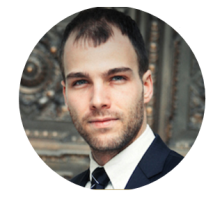
- Dr. Bryan Brazeau, Senior Teaching Fellow, Liberal Arts
A Preface from the Editor
As an educational discipline, Liberal Arts is all about critical and independent thinking – as its scholars therefore have very independent views, Liberal Arts has a different meaning for different individuals, be they scholars, teachers, or students. Below, Dr. Bryan Brazeau explores his own perspective, based on his background in classical culture during the Italian renaissance.
Todd Olive
Our world is changing at a rapid pace. A cursory scan of the news reveals on nearly a daily basis the rise and resurgence of frightening threats: antibiotic-resistant superbugs, climate change, autonomous weaponry, dramatic declines in insect and bee populations, rising militant nationalism, and data-driven political engineering, to name a few. In this climate, why would one wish to undertake one of the oldest courses of study in the world? Why embark upon a Liberal Arts education? Shouldn’t we all be focusing exclusively on subjects such as STEM fields, medicine, computer science, law, economics, or politics to address global challenges? While these fields are certainly of crucial importance for building a more equitable and sustainable future, so too is a Liberal education. In the following essay, I will provide a brief definition and some history of the Liberal Arts before discussing how such an education equips students with the critical knowledge, confidence, and tools to confront the challenges of the future today.
What are the Liberal Arts?
Put simply, a Liberal Arts education is one that trains you to think critically across a variety of fields; it is a program that calls on you to question your own assumptions and encourages you to become aware of the steps you take when thinking and making judgements. Liberal education dates back to classical antiquity. As Fareed Zakaria and Bruce Kimball note, it was an educational program that began in ancient Athens, where the city-state’s freedom and democracy-oriented constitution led to a broad-based approach to learning that was seen as a key element of Athenian liberty; training citizens to think for themselves, to find the path out of Plato’s allegorical cave, so that they could all play a role in governing and maintaining Athens’ hard-won freedom. (1)
The Romans would later term this education ‘liberalis’: the education pertaining to free men and women. Cicero, the famed Roman statesman, praised the artes liberales as essential in the education of a good orator. For Cicero, a good orator needed to be knowledgeable, well-versed in all fields of learning, and in possession of a moral compass. Such orators would often serve as lawyers and as politicians, shaping the direction of the Roman republic, at least in the few years that remained of it during Cicero’s lifetime before Cesar’s tyrannical coup.
In his treatise, De Oratore (On the Orator), Cicero laments the increasing specialisation he observed in the training of lawyers. He notes how Greek teachers of rhetoric and oratory saw no field outside their knowledge, relating the story of one Hippias of Elis, who bragged that
‘he had not only acquired the accomplishments that form the basis of the liberal education of a gentleman, mathematics, music, knowledge of literature and poetry, and the doctrines of natural science, ethics and political science, but had made with his own hand the ring he had on, the cloak he was dressed in and the boots he was wearing’. (2)
This brief example demonstrates two key aspects that would come to be part of the tradition of Liberal Arts education. On the one hand, Hippias combines a broad knowledge of abstract fields (music, maths, pure sciences, literature, ethics, and politics) with practical skills and craftsmanship (oratory/eloquence, ringsmithing, tailoring, shoemaking). On the other, he notes that this broad education was something he had acquired through study. The possibility of gaining knowledge across a wide range of fields in order to learn eloquence is at the heart of Cicero’s discussion of education. At the very beginning of his treatise, Cicero notes that he disagrees with his brother, Quintus. While the latter believes that eloquence is an inborn talent, Cicero argues that it is a teachable skill and goes on to write three books on the education of the ideal orator to prove his point. Much like Cicero’s training of the ideal orator, the tradition of learning in the Liberal Arts aims to provide an education across a wide range of fields, and is founded on the belief that everyone can find their own voice to help shape our society through a wide education that combines both pure and applied knowledge.
In the middle ages, the Liberal Arts were identified as seven fields and classified in two groups: the Quadrivium (music, arithmetic, geometry, and astronomy) and the Trivium (grammar, logic, and rhetoric). The Trivium was seen as preparatory study at university which led to studies of the Quadrivium. These, in turn, would lead to the study of philosophy, which was viewed as the highest and most noble discipline at the time (indeed, Thomas Aquinas famously wrote that philosophy was the handmaiden to theology). We might not share the same belief system as our medieval predecessors, and, thankfully, we have a far more inclusive and diverse view of education than they did. Nevertheless, just as a prism refracts white light into a spectrum of seven colours, the idea of approaching the ultimate truth about our world through a variety of study in different fields still resonates in the tradition of Liberal Arts education today.
During the Renaissance, a number of scholars in Italy aimed to rediscover knowledge of the classical world. They scoured monastic libraries across Europe to find manuscripts and many began to learn ancient Greek in order to gain access to important texts from the ancient world. Education soon followed suit. A new program, known as the studia humanitatis (humanities studies) began to take shape outside of the universities. This new movement emphasised the medieval trivium, and reframed this course of study to include moral philosophy, history, poetry, and the study of Latin and Greek. As students and their teachers began to look more deeply into the ancient world, a growing realisation of discontinuity with the past and historical consciousness dawned on them; while they might wish to imitate their classical predecessors, they belonged to a radically different culture and often felt that their greatest achievements could never quite compete with the masterpieces of the ancient world. Yet, the ideas of the ancient world could be harnessed and used as wisdom and inspiration for approaching contemporary challenges, as exemplified in the writings of Niccolò Macchiavelli, who attempted to make sense of a period of warfare and political uncertainty by looking to classical political theory and history.

A new dimension of Liberal Arts education emerges in this period: engaging in dialogue with the past in order to better understand our own world. While such investigations may reveal the many differences between past and present, they often reveal many similarities, too. Such dialogue can help us to challenge linear notions of progress and may prompt us to reflect on our own uncritical adherence to contemporary ideas and values. If you will allow me one more example from the Renaissance, this sense of complex interaction with a dynamic past is illustrated in Raphael’s frescoes for the Stanza della Segnatura in the Vatican painted between 1509 and 1511. This room was meant to be the library of Pope Julius II, and the paintings on the four walls indicated the subject headings of his library: theology, philosophy, law, and poetry. Raphael’s School of Athens (see above), the fresco meant to represent philosophy, is often used in discussions on the Liberal Arts to demonstrate the harmony of different disciplines. The painting features Plato and Aristotle at its centre, surrounded by classical thinkers from a wide variety of fields including maths (Euclid, Pythagoras), politics (Alexander the Great), fine arts (Apelles), and the natural sciences (Ptolemy). Raphael also includes non-Christian figures, such as the Islamic philosopher Ibn-Rushd (Averroes), who wrote extensive commentaries on Aristotle and was partly responsible for the re-popularization of Aristotelian philosophy in the late middle ages. Many of the figures in Raphael’s School of Athens also had contemporary counterparts; for example, Plato is thought to be a portrait of Leonardo da Vinci, while Heraclitus is thought to be a portrait of Michelangelo. While this painting does depict a sense of knowledge as created through various fields across time, and in the case of Averroes, across cultures, we should remember that it is only one of four paintings in the room.
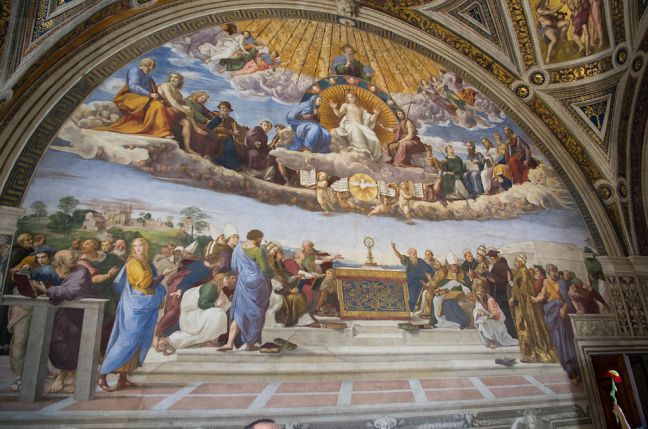
The fresco opposite the School of Athens is the Disputation of the Sacrament (see above), a debate on the Eucharist that spans both heaven and earth depicting biblical characters and famous theologians. Among the earthly figures, one can make out the Tuscan poet Dante Alighieri on the right-hand side. Dante is also depicted in another fresco in the same room: the Parnassus (see below).
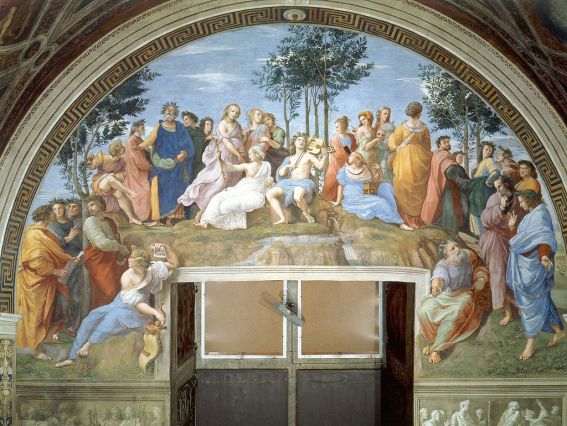
In the upper left of the painting, which celebrates music and the poetic arts, the blind poet Homer leads Virgil, to whom Dante looks for guidance. The fourth fresco, opposite the Parnassus is The Cardinal and Theological Virtues (see below), which illustrates the virtues of both the classical world (Fortitude, Prudence, Temperance) and the Christian world (Faith, Hope, and Charity). The fresco also depicts civil law, as embodied by the sixth-century byzantine emperor, Justinian, and canon law with the depiction of the medieval Pope Gregory IX. Raphael’s program for this room, then, illustrates what was thought to be the fruits of a Liberal Arts education in the early sixteenth century. Knowledge was seen as a collaborative enterprise produced through exchanges across fields of knowledge, in dialogue with the past, and even transcendentally between heaven and earth. Just as philosophy was thought to lead the way to theology (hence the opposition between the School of Athens and the Disputation of the Sacrament), so too could poetry lead to a moral education (hence the opposition between the Parnassus and the Cardinal and Theological Virtues). Human knowledge in these paintings is depicted as as complex, interdisciplinary, and transhistorical. Cicero’s ideal of knowledge as preparing one for active engagement in society is also present, and reflected in the representation of laws and virtues.
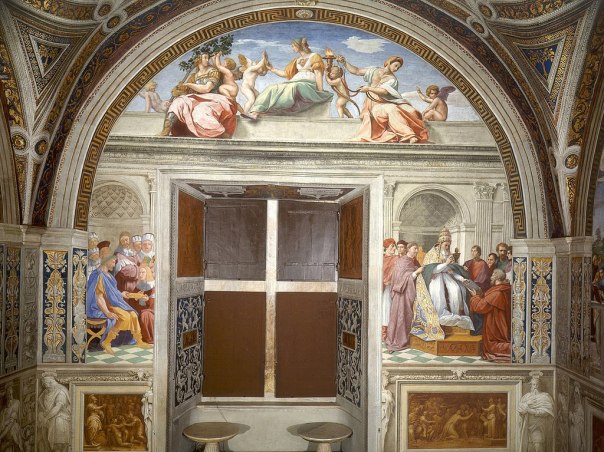
While the moral and theological elements of Raphael’s vision are no longer central to many contemporary Liberal Arts programs, this model has continued to exert a profound influence. In a certain sense, it became secularized through its reception and transformation during the Enlightenment, which Immanuel Kant would famously summarise in 1784 as ‘the freedom from self-incurred immaturity’. In the early years following the American revolution, Thomas Jefferson would write frequently about the importance of education in a democratic society. For Jefferson, a broad education was essential for the citizens of the new democratic republic he was trying to bring into being. Liberal education, particularly the study of history, was crucial to ensuring that democracy did not devolve into tyranny. As Zakaria notes, for Jefferson, an additional benefit to be gained from this kind of education was the creation of a ‘natural aristocracy’ of merit, rather than one based on nobility or wealth. With this type of education, any citizen could have an equal share in guiding the newly founded democratic republic. (3)
Liberal Education Today
Lest one think that Liberal Arts education was simply a lofty ideal of the classical world, the middle ages, the Italian Renaissance, or the early days of the American republic, calls for Liberal artists in today’s workforce are growing and getting louder. Liberal Arts programs today differ greatly from their predecessors, and look quite different from those that were developed in the nineteenth and mid-twentieth centuries. Liberal Arts programs are on the rise in Europe (particularly in the Netherlands), and throughout the U.K. Each program is configured differently, but they are all animated by the same core values that have driven Liberal Arts curricula since the ancient world: the conviction that a broad education across different fields of study helps foster a spirit of critical thinking, independent inquiry, and passionate intellectual curiosity. This kind of learning not only benefits students, encouraging you to think ‘outside the box’ and to draw on multiple fields of knowledge for innovative new ideas, but also benefits society at large, by teaching you to think critically, even about your own thoughts and to confront the Big Questions that face our world today. Warwick’s Liberal Arts degree course is the most exciting of these new ventures. Warwick’s program uses problem-based learning to tackle real-world contemporary challenges in the classroom, such as examining the complex networks of ideas between Art and Revolution, the dynamic relationship between Science, Society and the Media, or the wicked problems presented by topics such as Sustainability and Consumption. While BA Liberal Arts students follow a course of study in the department, each selects their own individualised pathway focused on a particular discipline or an issue that they wish to explore in greater depth. Problem-based learning allows the curriculum to change depending on students’ interests and needs, while staff and students collaborate across different fields of knowledge on a daily basis.
While STEM education is certainly still in high demand among employers, a number of business leaders and innovators, particularly in the tech sector, are now seeking out the unique skills of liberal arts graduates such as creativity, empathy, learning, and vision. Only a few weeks ago at the World Economic Forum in Davos, Jack Ma, the founder and executive chairman of Alibaba, noted that with the rise of artificial intelligence and automation, the key skills in the workforce of the future will be creativity, love, innovation, and human wisdom; skills with which no machine could ever compete (Ma has also spoken previously on this topic elsewhere). A new book from Microsoft’s president, Brad Smith, and its executive vice president of AI expresses similar ideas, noting that for the full deployment and management of AI solutions in our world, ‘every engineer will need to learn more about the liberal arts and every liberal arts major will need to learn more about engineering’. (4) Beyond the digital and tech sectors, Liberal Arts education has, to some extent, been able to fulfil the Jeffersonian ideal of a natural aristocracy. George Anders (author of You Can Do Anything: The Surprising Power of a “Useless” Liberal Arts Education) has remarked on how liberal education has helped first-generation university students achieve long-term success. On a personal note, as a first-generation university student myself and a graduate of Concordia’s Liberal Arts College (Montréal, Canada), I can also attest to the spirit of critical inquiry and social empowerment that such an education provides.
More broadly, graduate recruiters across a number of sectors continue to emphasise that they seek to hire passionate and self-motivated employees who possess strong communication skills, who are good at problem solving, and who have the ability to adapt to changing circumstances and to learn quickly. These are precisely the skills that a Liberal Arts education seeks to foster in students, encouraging critical thought and a passion for lifelong learning. Liberal education is at an exciting juncture right now as new programs are gaining influence, students are beginning to see the benefits that this model can bring to their development, and employers are increasingly seeking the unique talents of liberal artists. The skills that a Liberal Arts education fosters are now more important than ever in confronting the local, regional, national, and global challenges that we face.
Returning to the topic of oration and eloquence with which this piece began, I would like to close with the words of Pericles, the ancient Athenian leader, which I believe still ring true today. One year into the war, after the first battles between democratic Athens and the martial dictatorship of Sparta have claimed a number of lives, a public funeral was held for the Athenian soldiers who had perished. Pericles, the leader of the Athenian forces, gives a speech that emphasises the value of democracy, free thought, and an education based on one’s own intellectual passions:
We [Athenians] throw open our city to the world, and never by alien acts exclude foreigners from any opportunity of learning or observing, although the eyes of an enemy may
occasionally profit by our liberality; trusting less in system and policy than to the native spirit of our citizens; while in education, where our rivals from their very cradles by a painful discipline seek after manliness, at Athens we live exactly as we please, and yet are just as ready to encounter every legitimate danger […] In short, I say that as a city we are the school of Greece, while I doubt if the world can produce a man who, where he has only himself to depend upon, is equal to so many emergencies, and graced by so happy a versatility, as the Athenian. (5)
If Athens was the ‘school of Greece’, it was because it encouraged interdisciplinary learning, discussion, and critical thought. Such learning and democratic freedom is presented in Pericles’ speech as intrinsically tied to the flows of trade and migrants from different nations who came through the nearby port of the Piraeus. Indeed, Plato’s Republic begins with Socrates’ relating his trip to this same port. The approach of a Liberal Arts education in emphasising critical thinking and a multi-faceted approach to knowledge is one of the perennial fruits of democracy and can guide us toward open and active engagement with the world.
References
(1) Fareed Zakaria, In Defense of a Liberal Education (2015), 41-3; Bruce Kimball, The Liberal Arts Tradition: A Documentary History (2010), 25.
(2) Cicero, De Oratore (translation by E.W. Sutton and H. Rackham), 3.32.127-8.
(3) Zakaria, 110-111.
(4) Brad Smith and Harry Shum, ‘Foreword’, The Future Computed: Artificial Intelligence and Its Role in Society (Microsoft, 2018).
(5) Thucydides, History of the Peloponnesian War, 2.34-36.

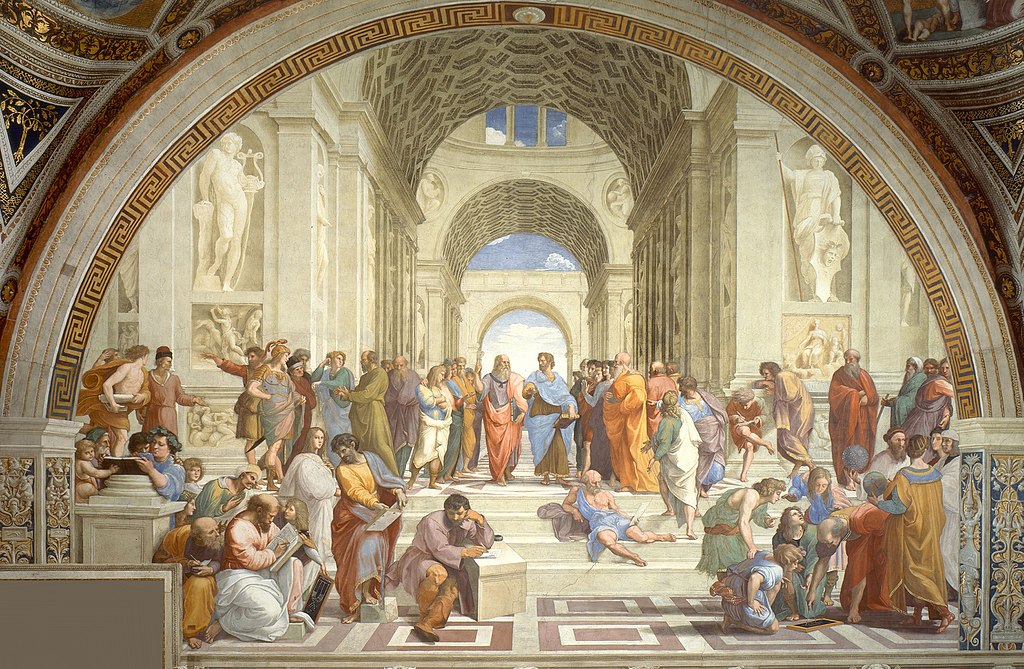
One thought on “Schools of Athens: Liberal Arts and Global Challenges”